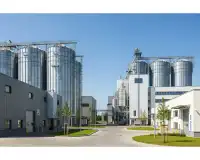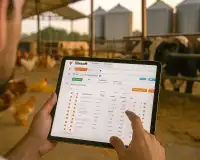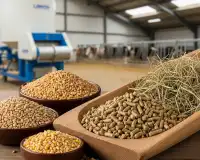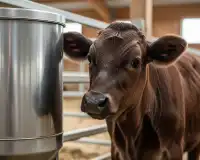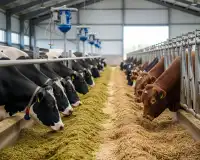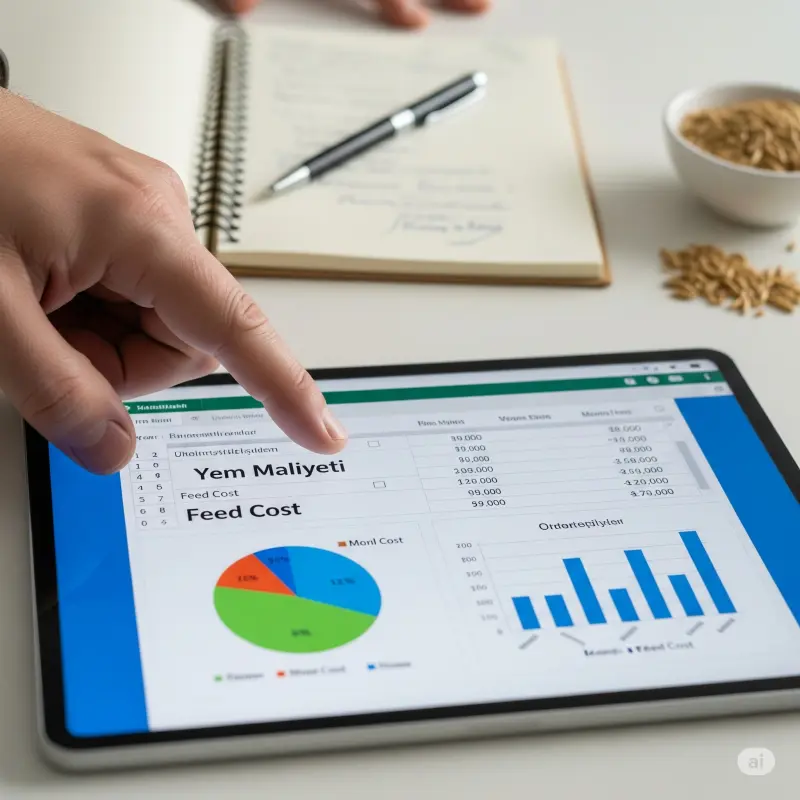What is Total Mixed Ration (TMR) for Beginners?
What is TMR in animal feeding? In this guide, discover the benefits of TMR (nutrient balance, rumen health, increased yield), its key components, and the preparation process. TMR applications for modern and efficient livestock farming!
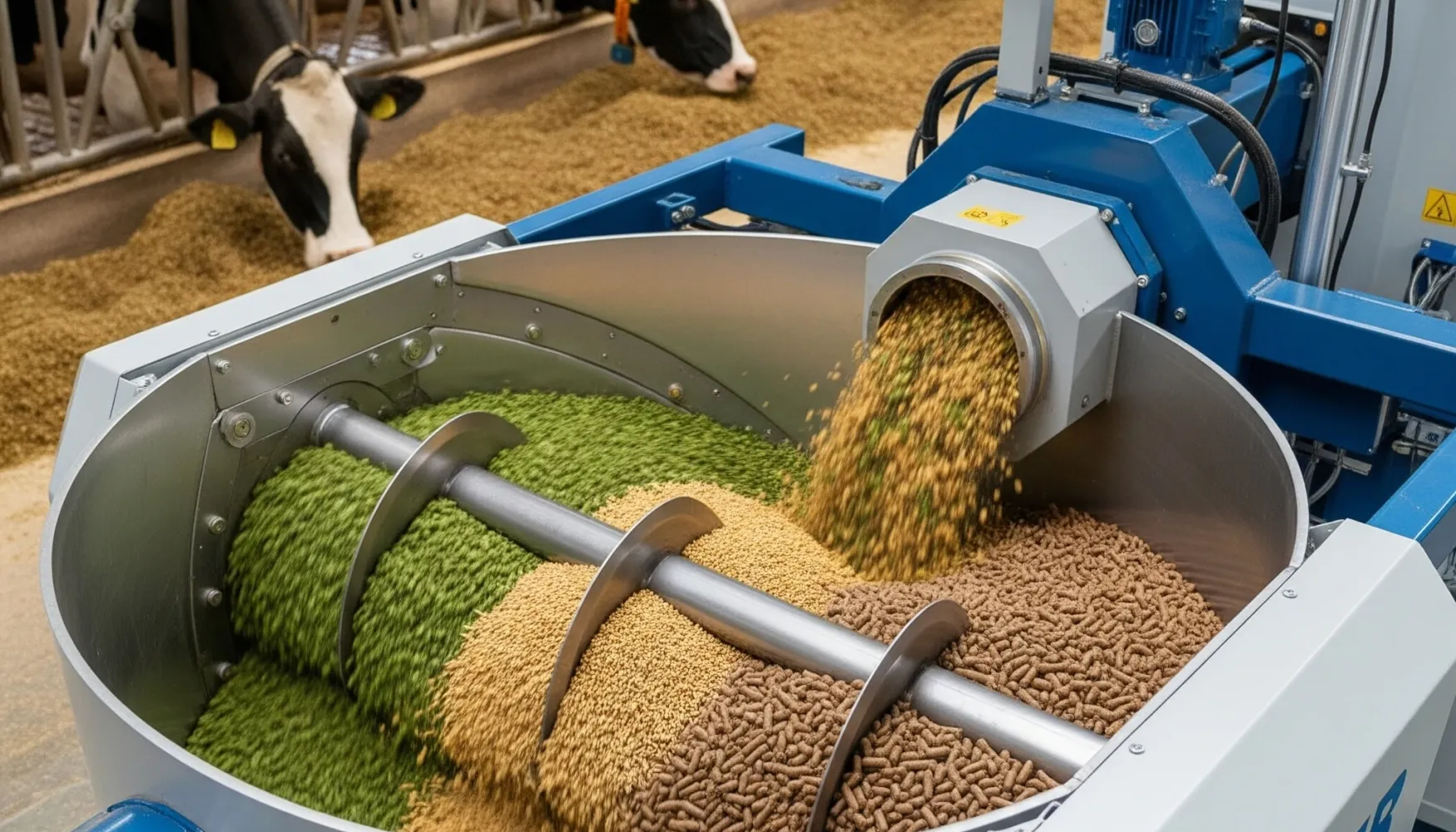
What is Total Mixed Ration (TMR)?
**Total Mixed Ration (TMR)** is a feeding method based on the principle of **homogeneously mixing all roughages (hay, silage, dry grass, etc.), concentrate feeds (corn, barley, soybean meal, etc.), vitamin and mineral mixtures, and even water** present in a ration and offering it to animals. As its name suggests, all the nutrients an animal needs to consume in a single meal are provided as a single, balanced, mixed feed.
While traditional feeding methods might offer roughage and concentrate feed separately, TMR eliminates this distinction. The animal receives the entire ration and its balanced nutrient content with every bite.
Why Should You Use TMR? What Are Its Benefits?
The TMR system offers numerous significant benefits for livestock producers:
- Nutrient Balance: Ensures that the animal receives the same balanced nutrients with every bite. This eliminates nutrient selectivity (sorting) and guarantees that all animals consume the prescribed ration.
- Rumen Health: Promotes more stable digestion. Simultaneous digestion of roughage and concentrate feeds prevents sudden fluctuations in rumen pH, reducing the risk of digestive problems like acidosis.
- Increased Yield: Thanks to balanced nutrition, animals reach maximum meat, milk, or offspring yield commensurate with their genetic potential. A significant increase in milk yield is observed, especially in dairy cows.
- Feed Conversion Rate: Better digestion of feeds and more efficient utilization of nutrients increase the feed conversion rate, which in turn reduces feed costs.
- Labor and Time Savings: A more organized and single-pass feeding process reduces labor costs and time spent.
- Less Feed Waste: Preventing feed selectivity and reducing waste in feeders optimizes total feed consumption.
- Herd Uniformity: All animals receiving the same nutrient profile ensures more homogeneous development and performance within the herd.
Key Components of TMR:
A TMR ration typically includes the following main components:
| Component Group | Example Raw Materials | Role in TMR |
|---|---|---|
| Roughages | Corn silage, alfalfa hay, meadow hay, straw, vetch silage | Provides rumen health, fiber, energy, and some protein. Forms the bulk of the ration. |
| Energy Sources (Concentrate) | Corn, barley, wheat, molasses, oats | Provides fast and dense energy, critical for milk and meat production. |
| Protein Sources (Concentrate) | Soybean meal, sunflower meal, canola meal, cottonseed meal | Provides necessary protein for muscle development, milk, meat, and wool production. |
| Vitamin and Mineral Mixes (Premix) | Special cattle premixes, calcium carbonate, dicalcium phosphate, feed salt | Meets all vitamin and mineral needs of the animal, essential for general health and metabolism. |
| Water | Clean and fresh water | Ensures homogeneous mixing of the ration and aids digestion. |
TMR Preparation Process:
The TMR preparation process generally involves the following steps:
- Ration Determination: The content and proportions of the ration are determined by an animal nutrition specialist (veterinarian or agricultural engineer) based on the animal's species, age, production level, and physiological status (pregnant, lactating, dry period, etc.).
- Raw Material Preparation: Roughages (silage, hay) are chopped as needed. Grains are ground.
- Mixing: All raw materials in the determined proportions (roughages, concentrate feeds, vitamin-mineral mixes, and sometimes water) are homogeneously mixed using special equipment called a **TMR mixer wagon**. These machines cut, chop, and ensure even distribution of the feed.
- Feeding: The prepared TMR is distributed into feeders, making it freely accessible to the animals. It is important that the feeders are not left empty throughout the day and that fresh feed supply continues.
Tips for a Successful TMR Application:
- Correct Ration: It is essential that the ration is prepared by a specialist, considering the analysis results of the raw materials and the current needs of the animals.
- Homogeneous Mix: Loading the TMR mixer wagon according to its capacity and ensuring sufficient mixing time are critical for a homogeneous mixture. Mixing time should not be too short or too long.
- Feeder Management: Feed in the feeders should be within easy reach of the animals, and fresh feed should always be available. Regular cleaning of feeders is important.
- Water Supply: No matter how balanced the TMR is, productivity will decrease without free access to clean and fresh water. The quality and sufficiency of water sources should be continuously monitored.
- Regular Monitoring: Animals' live weight gain, milk yields, feed intake, and stool consistency should be regularly monitored. This data provides information about the effectiveness of the ration and allows for necessary adjustments.
- Mold and Spoilage Control: TMR, being a mixed feed, can be more prone to spoilage. Attention should be paid to storage conditions and feeding frequency to prevent feeds from molding and spoiling. Especially in hot weather, frequent cleaning of the feeder and fresh feed supply are important.
The Total Mixed Ration (TMR) system is a powerful tool to increase productivity and animal health in modern livestock farming. Although it requires some initial investment and knowledge, it will significantly contribute to your operation with its long-term benefits. Remember, healthy animals are the foundation of a successful business.
